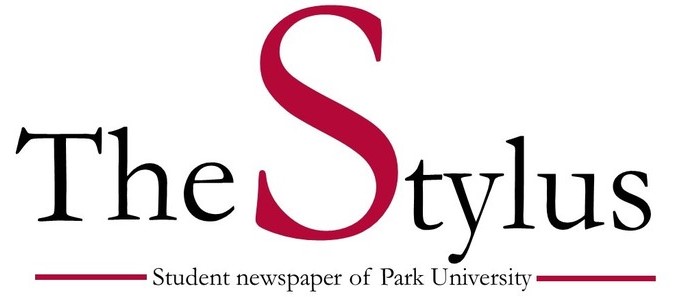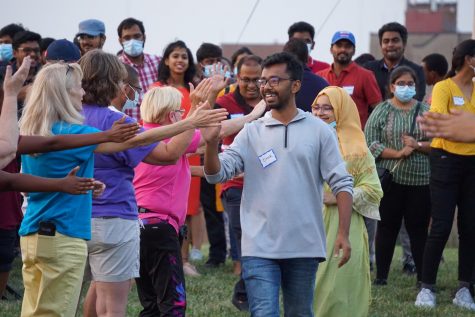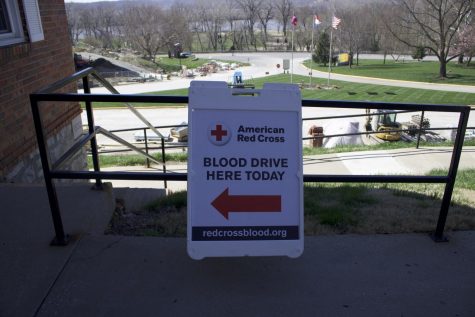Park co-hosts peace building conference
The second day of the Kansas City area Peacebuilding Conference was hosted Nov. 1 in the Park Distance Learning Conference Center. This year’s event topic was human rights as the foundation of peace building.
The first day of the conference was held at Avila University while Johnson County Community College hosted the third day. Park hosted the second day and has deep ties to the event, due in large part to Steven Youngblood, associate professor of communication at Park.
Youngblood is also director for the Center of Global Peace Journalism and wrote a book on the topic called Peace Journalism Principles and Practices. In his book, Youngblood describes peace journalism as an alternative to “war journalism,” which publishes reactive responses to conflict and has an over-emphasis on violence. In contrast, peace journalism favors context, analysis and objectivity.
Youngblood maintains peace journalism is not about advocating for peace but giving it a chance. That peace journalism doesn’t change what is reported on, just how it is reported. One area of reporting these choices can be especially obvious is the coverage of human rights, which was the conference theme this year.
For conference speaker Sarah Margon, foreign policy director of the Open Society Foundations and a former director of Human Rights Watch, the two are integral to each other.
“If you know what’s going wrong you can push for change,” said Margon.
She referred to journalism as a force multiplier, bringing attention to issues and giving the world a chance to apply pressure for change where other means had failed. She described instances in her time with Human Rights Watch where detailed reports on abuses were published then never heard about again.
“If we didn’t have the media no one would know about it,” said Margon.
Conversely, she pointed out that activists can go many places journalists can’t, encapsulating the important relationship the two groups share. To illustrate, she pointed to unstable countries and war zones where combat protections for journalists may be ignored.
“If you don’t have fundamental freedom in a location, journalism can’t function,” said Margon. “And in the human rights world, so many abuses are happening at a local level.”
Carrying on the theme of human rights at a local level, the event’s second speakers were Lewis Diuguid of the National Association of Black Journalists and former editorial board member of The Kansas City Star, and Bette Tate-Beaver of the KC Association of Black Journalists and executive director of the National Association of Multicultural Education.
“We used to talk about social justice from the perspective of: ‘We have a few things we need to work on, but we’re ahead of the rest of the world,’” said Tate-Beaver. “‘Unfortunately as we all know, now we’re heading in the other direction.”
As an example, Diuguid said in 1978, a year after he began his career at The Kansas City Star, the American Society of News Editors set a goal to have the percentage of journalists of color equal to their percentage of the population.
“They gave themselves 22 years to achieve that goal,” said Diuguid.
Using their information and U.S. census data from 1980, Diuguid showed while people of color made up 21.93 percent of the country’s population in 1980, they held only 4 percent of newsroom jobs. By 1999, that number had risen to just 11.5 percent of newsroom jobs while people of color had come to represent more than a third of the population, Diuguid said. In 2017, The American Society of News Editors announced that minority journalists comprised 16.6 percent of the workforce in U.S. newsrooms.
“So, the news media are doing a horrible job of trying to be at parity with the population,” said Diuguid. “We cannot forge a tradition of accepting and embracing human rights until we realize where we’ve been in the past.”
This idea is also important to Tate-Beaver. The speakers discussed the numbers not as evidence of failure, but rather as an illustration of how unseen imbalances in an institution can create a skewed perception. This skewed perception is one of the things the event’s organizers and peace journalists hope to remedy.
Your donation will support the student journalists of Park University. Your contribution will allow us to cover our annual website hosting costs, freeing up other funds for equipment, printing and training.






